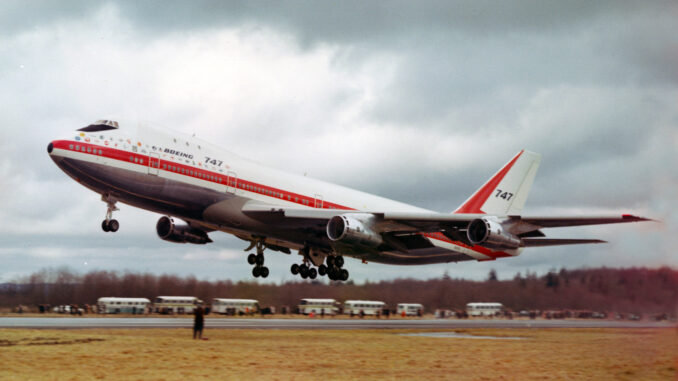
On February 9, 1969, at 11:34 a.m., Boeing Chief Test Pilot Jack Wadell, with Engineering Test Pilots Brien Singleton Wygle, co-pilot, and Jesse Arthur Wallick, flight engineer, took off from Paine Field, Everett, Washington, aboard RA001, the prototype Boeing 747-121, and made a 1 hour, 15-minute test flight. The ship was named City of Everett after the home of the factory where it was built. It was originally registered as N7470.

The 747 was the first “wide body” airliner and was called a “jumbo jet.” It is one of the most widely used airliners and air freighters in service worldwide. The latest version is the 747-8, the “Dash Eight.” After 53 years, production ended with a total of 1,574 747s built.
The Boeing 747 is a very large swept wing, four-engine commercial transport. The 747-100 series was the first version to be built. It was operated by a flight crew of three—pilot, co-pilot, and flight engineer—and was designed to carry 366 to 452 passengers. The airplane is 231 feet, 10.2 inches (70.668 meters) long with a wingspan of 195 feet, 8 inches (59.639 meters), and an overall height of 63 feet, 5 inches (19.329 meters). The wings are swept aft to 37° and have a total area of 5,500 square feet (511 square meters). The angle of incidence is 2°, and there are 7° of dihedral.
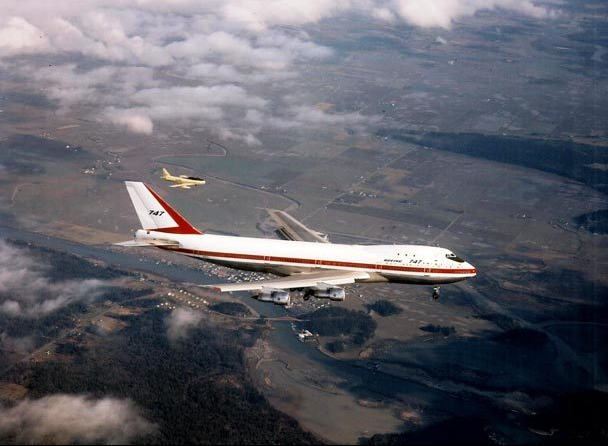
The interior cabin width is 20 feet (6.096 meters), giving it the name “wide body.” Its empty weight is 370,816 pounds (168,199 kilograms) and the Maximum Takeoff Weight (MTOW) is 735,000 pounds (333,390 kilograms).
The 747-100 is powered by four Pratt & Whitney JT9D-7A high-bypass ratio turbofan engines. The JT9D is a two-spool, axial-flow turbofan engine with a single-stage fan section, a 14-stage compressor (11 high- and 3 low-pressure stages), and a 6-stage turbine (2 high- and 4 low-pressure stages). The engine is rated at 46,950 pounds of thrust (208.844 kilonewtons), or 48,570 pounds (216.050 kilonewtons) with water injection (2½-minute limit). This engine has a maximum diameter of 7 feet, 11.6 inches (2.428 meters), is 12 feet, 10.2 inches (3.917 meters) long and weighs 8,850 pounds (4,014 kilograms).
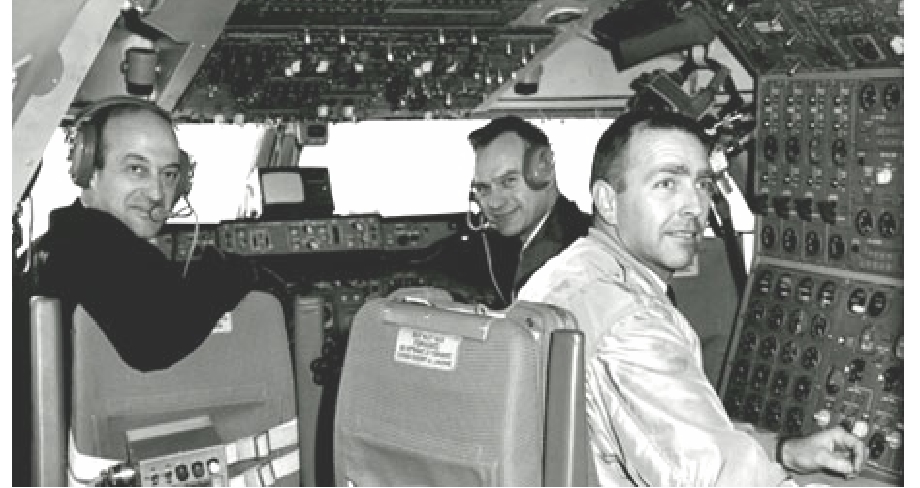
The 747-100 has a cruise speed of 0.84 Mach (555 miles per hour, 893 kilometers per hour) at 35,000 feet (10,668 meters). The maximum certificated operating speed is 0.92 Mach. The airliner’s maximum range is 6,100 miles (9,817 kilometers). City of Everett last flew in 1995. It is on static display at The Museum of Flight, Boeing Field, Seattle, Washington.

Related Articles
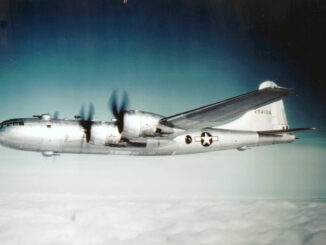
Today in Aviation History: USAF Begins to Retire the B-29…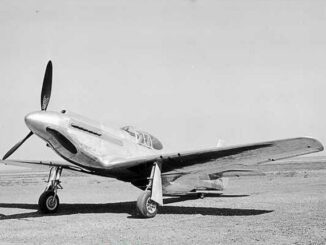
Today in Aviation History: First Flight of The North American…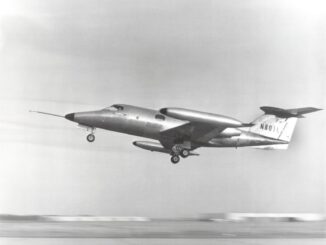
Today in Aviation History: First Flight of The Learjet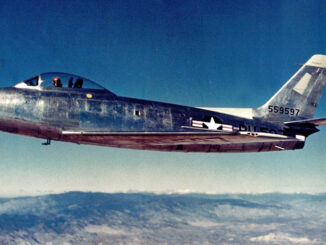
Today in Aviation History: First Flight of The North American…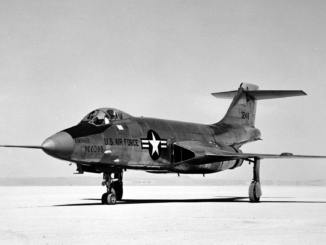
Today in Aviation History: First Flight of The F-101 Voodoo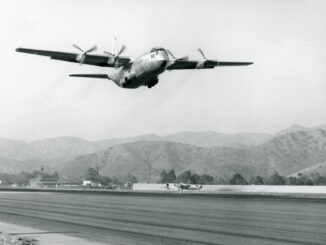
Today In Aviation History: First Flight of The Lockheed YC-130…
Born in Milan, Italy, Moreno moved to the U.S. in 1999 to pursue a career as a commercial pilot. His aviation passion began early, inspired by his uncle, an F-104 Starfighter Crew Chief, and his father, a military traffic controller. Childhood adventures included camping outside military bases and watching planes at Aeroporto Linate. In 1999, he relocated to Atlanta, Georgia, to obtain his commercial pilot license, a move that became permanent. With 24 years in the U.S., he now flies full-time for a Part 91 business aviation company in Atlanta. He is actively involved with the Commemorative Air Force, the D-Day Squadron, and other aviation organizations. He enjoys life with his supportive wife and three wonderful children.



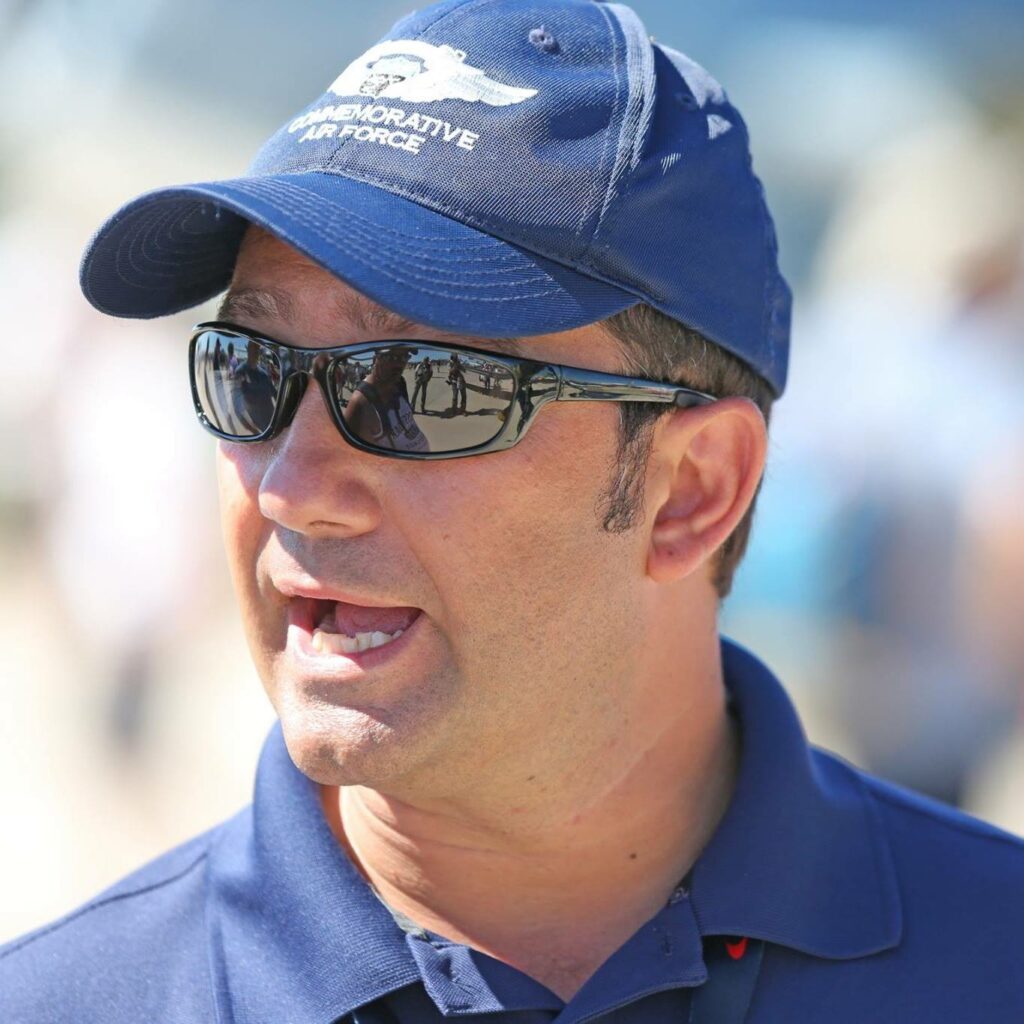
Be the first to comment
Graphic Design, Branding and Aviation Art